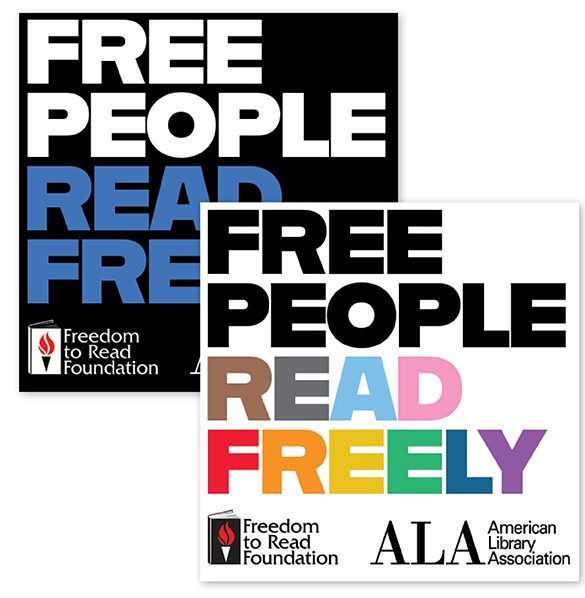
This week’s Hyperlinked Library module covers a variety of differing environments and issues in the modern information science landscape, in a “choose your own adventure” learning style. One of the topics under examination was censorship and book banning in libraries.
In my previous reflection blog post, I discussed librarian’s responses to book banning efforts targeting marginalised groups, and efforts to create safe and welcoming libraries. Now, let’s examine the other side of the coin, and review the origins of contemporary book banning in the United States.
Book bans have long affected American libraries. Early challenges targeted materials deemed “obscene” under the auspices of the 1873 Comstock Act, so named for a prolific censorship advocate who reportedly declared “Books are feeders for brothels” (Kaminer, 2009). Prominent works such as Ulysses, On the Origin of Species, Anne Frank’s Diary, and even Alice in Wonderland have been challenged at various points, removing seminal works and cultural touchstones from the shelves of libraries and bookstores (Knupp, 2023). In an era with fewer avenues to access information, individual objections to language, themes, or viewpoints could result in challenged books being effectively unavailable in entire communities.
While moral boundaries have shifted, and means to access information have increased, book banning remains a popular outlet for outraged moralists and intolerant interest groups. In fact, external censorship efforts targeting school and public libraries have risen at a truly staggering rate: data from the ALA indicates a sharp rise in both the number of book challenges and the number of individual titles challenged since 2021, including over 9,000 distinct books targeted in 2023 alone (American Library Association, 2024). The most-frequently challenged titles in recent years are All Boys Aren’t Blue, Melissa, and Gender Queer, indicating a widespread effort to ban books concerning sexual and gender identity. Perhaps the most troubling trend is the source of the ban efforts: in 2024, 72% of challenges came from pressure group or the decision-makers they target, up from 25% in 2020, and just 14% in 2015. Book ban efforts are no longer the result of individual citizen complaints, they are the product of well-organized and influential groups, who hold clear agendas to limit library agency and control access to books they view as objectionable. A report by PEN America identifies some of the most expansive and active of these groups–Moms for Liberty, with over 200 chapters nationwide, US Parents Involved in Education and, No Left Turn in Education lead the way in censorship (PEN America, 2022).
Providing access to information and fostering community are central to the goals of our libraries–book bans are in direct opposition to these goals, seeking to limit access to information and to divide our communities. They seek to impose exclusionary practices on institutions meant to serve and represent us all, and attempt to shun and silence those who need safe places and outlets.
If the forward-thinking, “hyperlinked” librarian is to identify “trends that impact service” (Stephens, 2016, p. 2), and if the library is to be rooted in “caring and empathy” (Stephens, 2019, p. 23), then we must keep a close eye on the rampant spread of library censorship, and the library must remain as welcoming and supportive as it possibly can be. By identifying trends in book banning and the groups behind them, librarians can remain informed of efforts which seek to censor our shelves and ostracize our users.
References
American Library Association. (n.d.). Free people read freely buttons. ALAstore. https://alastore.ala.org/content/free-people-read-freely-buttons
American Library Association. (2024). Censorship by the numbers. https://www.ala.org/bbooks/censorship-numbers
Kaminer, W. (2009, August 24). The banality of censorship. The Atlantic. https://www.theatlantic.com/national/archive/2009/08/the-banality-of-censorship/23764/
Knupp, M. (2023, October 5). 10 ye old banned books. University of Iowa Libraries. https://blog.lib.uiowa.edu/speccoll/2023/10/05/10-ye-old-banned-books/
PEN America. (2022, September 19). Banned in the USA: The growing movement to censor books in schools. https://pen.org/report/banned-usa-growing-movement-to-censor-books-in-schools
Stephens, M. (2016). The heart of librarianship: Attentive, positive, and purposeful change. ALA Editions.
Stephens, M. (2019). Wholehearted librarianship: Finding hope, inspiration, and balance. ALA Editions.
4 responses to “Reflection: Book Banning in America”
@colinmcleod Glad you focused on this topic. We just had an instance of a book challenge up here in Traverse City. This past spring regarding a book called “Grandpa’s Pride” — I have a letter I wrote in support of the book. I will post it to the course blog.
Oops – “Grandad’s Pride.”
Libraries are the guardians of stories—stories that entertain, educate, and broaden our understanding of the world. Within their walls, they preserve history and fantasy, scientific discoveries and personal memoirs, offering voices from every culture and perspectives that challenge, inspire, and inform. Critically, libraries ensure that the stories of people of color, LGBTQ+ individuals, those with disabilities, and other often marginalized voices are preserved and shared. This commitment to inclusivity ensures that every story has a place, enriching our collective narrative and reflecting the full spectrum of human experience. These efforts deserve recognition, celebration, and steadfast protection.
@michael I couldn’t agree with this more! We all deserve a safe space and representation in our libraries. I think folks raising their voices in support of these challenged books is such an important countermeasure to the recent surge in book bans.
@colinmcleod absolutely. I would think any opportunity we have to push back against book bans, or challenges we should act.